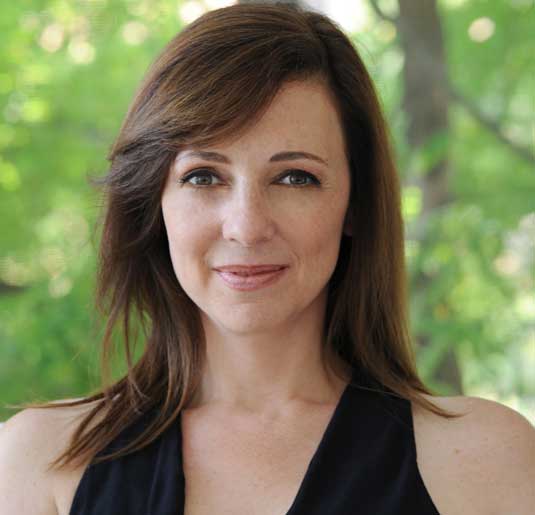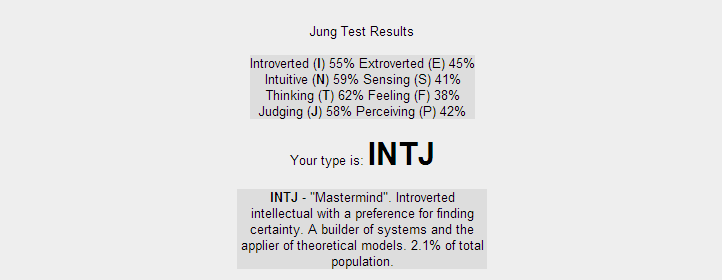Experimental Personality Designs Analyzing Categorical by Continuous
Which personality types make the best designers?
"It takes all sorts to make a world" the old saying goes. It's never more true than when it's applied to the workplace. From gregarious creative directors to gruff and blunt accountants, the stereotypes are there for a reason. Our personalities determine how suitable we are for the job that we do.
It's amusing, then, that HR departments up and down the land only ever want to recruit one kind of person. A real team player, who is genial and positive. How many times have you had to pretend to be that guy to get your foot in the door?
If you're a designer, the answer is probably "a lot". Surveys suggest that designers have quite distinct personality types – and they're not naturally the life and soul of the party. But they do get the job done.
In this article, we take a deep, long look at the personality types that make the best designers....
Introversion and the designer
Extroverts – people who are easily sociable, good at verbal communication and thrive in teams – seem to be more sought after in the workplace than their quieter friends. Even in a day and age when recruitment advertisements are carefully inclusive about the language they use, it's common to see job descriptions with words like "outgoing" and "upbeat".
An introvert, in contrast, finds a lot of social interaction draining. Thoughtful and slower to speak their minds, they're often portrayed as "anti-social", "shy" or even "boring". When surrounded by people willing to shout their brains out at any opportunity, it's easy to see why they may be overlooked.

Susan Cain's Quiet: The Power of Introverts in a World that can't Stop Talking (opens in new tab) was published in 2012 and has started a conversation about how we should think about introversion, highlighting the positive. And that's good news for designers because, research shows, many of us are more introverted than extroverted.
The research
It turns out that designers often prefer to work alone, solving problems and creating solutions. For example, design professor at Mississippi State University Beth Miller and a group of researchers found that an introverted personality type was the most prevalent among its postgraduate designers.
How does that translate to the process of design? Very well, as it happens. Introverts tend to work well without guidance from others. They are slower to speak their minds because they are more careful when processing data; they think before making decisions or saying anything. They're good with detail and have better focus. And, as Susan Cain says, introverts can be just as creative as extroverts - they just tend to channel it into their work:
"Studies suggest that innovation often requires solitude," says Cain, "The majority of spectacularly creative people across a range of fields are introverts, or at least comfortable with spending large chunks of time alone."

Does that mean extroverts make bad designers? Not at all. But their approach to the job and their role within a team may be different. A designer with more extrovert tendencies may be the person who gets chosen to present ideas to clients, for example. They may be find their niche later, as a director or team leader.
Besides, there's no such thing as a "pure" introvert or extrovert – it's a continuum. In fact, in the research we've cited most people tend to cluster around the middle of the spectrum. One recent survey by Strategic Aesthetics, shows an average of 52% introversion in designers.
Myers Briggs
When we return to the numbers, we can look at personality in more detail. In the Mississippi State research the most prevalent personality type was introverted. But the study uncovered 14 different personality types among designers and the immediate runner-up showed more extroversion.

The study used the Myers Briggs scale to categorise respondents, a personality test that measures four traits. Though important, "attitude" – the introversion/extroversion scale – is just one of them. The other traits are perception, judgment and lifestyle. Each of these has its own scale or "dichotomy", building on the work of pioneering psychoanalyst Carl Jung.
Perception goes from "sensing" to "intuition". The terms here are a bit confusing, because "sensing" means someone who uses the evidence of their senses; what they can actually see, hear, feel and touch. They concentrate on the now. Intuitive people look for patterns in data and extrapolate into the future; what might happen. The other traits similarly have scales that go from the concrete to the abstract.
On the judgement scale, one end is "thinking" – meaning people who make decisions by going over the evidence in their minds and logically reaching conclusions. The other end of the scale is "feeling" or gut instinct.

Finally, the lifestyle dichotomy has at one end "judging", which means the individual is organised and plans for things. The other end is "perceiving", a personality trait that leads to spontaneity in action; someone who behaves according to how they feel in the moment.
These four personality traits can be used to calculate upto 16 personality types. The leading type for designers? According to the Mississipi State study it's INFP (Introvert Intuitive Feeling Perceiving). Strategic Aesthetic's survey showed a prevalence of INTJ types (Introvert Intuitive Thinking Judging).
Introversion and Intuition
In both cases "introversion" and "intuition" (the ability to look for patterns and solve problems) are at the top of the list. The fact that the other two traits were different underlines that – though we might be able to suggest broad characteristics that are suitable – there's no cookie cutter mould for turning out graphic designers.
A designer who is more thinking than feeling is likely to produce work that is detail oriented and that meets the brief. A more "feeling" designer might take more risks and be more prepared to break rules for a result they're happy with.
Similarly, the "perceiving" designer can be more spontaneous as they work through a project. Their workmate who is more "judging" is likely to have an organised overview. It's worth noting that in the two most prevalent personality types for designers, INFP and INTJ, both have elements of chaos or spontaneity somewhere in their character, depending on whether creativity comes from the judgement scale or the lifestyle scale.
Team players
So – the research says that most graphic designers are close to INFP or INTJ on the Myers Briggs scale. But that's not the last word. There are other combinations that work well too.
ENFP and ENFJ came second and third place in both the main surveys we looked at. In both cases, the extroversion level measured was moderate, but for many designers being able to comfortably communicate ideas is important. Or, at least, having someone on the team is who can is...
There's one trait that's definitely prevalent in all the results we looked at; intuition. That's the ability to solve problems in an abstract way. It would be rare to find a designer without that as part of their make-up.
Words: Karl Hodge (opens in new tab)
Karl Hodge is a technology journalist who teaches Digital Journalism at Leeds Met and writes books. Follow him on Twitter @karlhodge (opens in new tab).
Like this? Read these!
- The designer's guide to how to start a blog (opens in new tab)
- Read our pro guide to working from home (opens in new tab)
- Check out these top business card templates (opens in new tab)
- Be inspired by these creative resumes (opens in new tab)
- We reveal the best desk exercises (opens in new tab)

Thank you for reading 5 articles this month* Join now for unlimited access
Enjoy your first month for just £1 / $1 / €1
*Read 5 free articles per month without a subscription

Join now for unlimited access
Try first month for just £1 / $1 / €1
Related articles
Source: https://www.creativebloq.com/career/which-personality-types-make-best-designers-71412160
0 Response to "Experimental Personality Designs Analyzing Categorical by Continuous"
Post a Comment